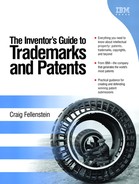The Trade Secret and How to Exercise Control
Trade Secrets are defined by a number of sources. Under the Restatement of Torts, §757 (1939), “a trade secret may consist of any formula, pattern, device or compilation of information which is used in one's business, and which gives him an opportunity to obtain an advantage over competitors who do not know or use it. It may be a formula for a chemical compound, a process of manufacturing, treating or preserving material, a pattern for a machine or other device, or a list of customers.”
Trade secrets are defined under the Uniform Trade Secrets Act as:
A trade secret means information, including a formula, pattern, compilation, program, device, method, and technique or process that:
Derives independent economic value, actual or potential, from not being generally known to, and not being easily ascertainable by proper means, by other persons who can obtain economic value from its disclosure or use
Is the subject of efforts that are reasonable under circumstances to maintain its secrecy
The Illinois Trade Secrets Act, 765 ILCS 1065/1 et seq. (West 1993), provides that trade secrets are information, including (but not limited to) technical or non-technical data, a formula, pattern, compilation, program, device, method, technique, drawing, process, financial data, or list of actual or potential customers or suppliers, that
Is sufficiently secret to derive economic value, actual or potential, from not being generally known to other persons who can obtain economic value from its disclosure or use
Is the subject of efforts that are reasonable under the circumstances to maintain its secrecy or confidentiality
The New Restatement of the Law Third, Unfair Competition defines a trade secret in Section 39 as follows:
§ 39. Definition of Trade Secret. A trade secret is any information that can be used in the operation of a business or other enterprise and that is sufficiently valuable and secret to afford an actual or potential economic advantage over others.
In addition to these interpretations, it is well established that a trade secret can exist in a combination of characteristics and components, each process, design and operation of which, in unique combination, affords a competitive advantage and is a protectable secret. Also, a trade secret need not be essentially new, novel, or unique like a patent.
The trade secret owner may communicate the trade secret to others provided that those to whom the trade secret is communicated pledge not to reveal the trade secret to others.
Unlike other forms of intellectual property protection we have previously discussed, trade secrets are generally protected by state law and not by federal laws. Trade secret protection is in certain cases very limited. A trade secret holder is only protected from unauthorized disclosure and use of that trade secret by others and from another person obtaining the trade secret by some improper means.
Several factors determine if subject matter qualifies as a trade secret. Among the factors considered are the extent of measures taken by the trade secret owner to guard the secrecy of the information and the ease or difficulty with which the information could be properly acquired or duplicated by others. Based on these considerations, the general rule is that subject matter cannot be successfully protected as a trade secret if it is widely distributed. However, if adequate security precautions are taken to ensure that access to the subject matter being distributed is treated as secret, the subject matter may still be considered a trade secret.
Whether trade secret owners distribute their trade secrets through will largely depend on the extent that they believe that the secrecy of the trade secret will not be compromised by such a distribution.
In addition to the concerns regarding security precautions, issues of jurisdiction may also arise. As trade secrets are generally protected by state law, determining which state's law should control in a trade secret disputeis often an issue. This choice of law issue, however, is no more problematic than those issues presently associated with the distribution of trade secrets and can be adequately resolved by the choice of law rules presently codified in state law.
To some degree, whether trade secret owners distribute their trade secrets may also depend on the type of information products and services being disseminated. For instance, it has been suggested that the most common way to protect software is through trade secret protection. Unlike most trade secret information, computer programs can be copied and used without the copier ever understanding or viewing the information in a comprehensible form.
In a trade secret, the actual idea need not be complicated; it may be extremely simple and nevertheless qualify as a trade secret. That is, unless (of course) the idea is common knowledge and known within the public domain. The fundamental notion here to remember is that a trade secret may not be within the realm of general skills and knowledge in one's field of business, and as such, the idea may not be readily duplicated without involving considerable time, effort, and expense. This is a trade secret: Protect it.
